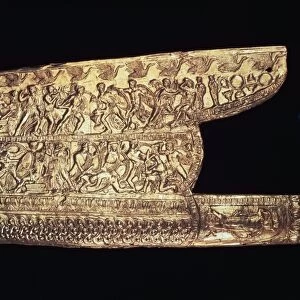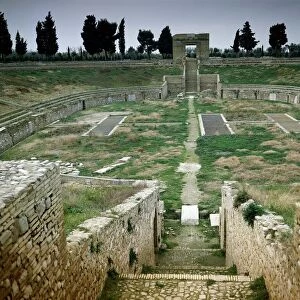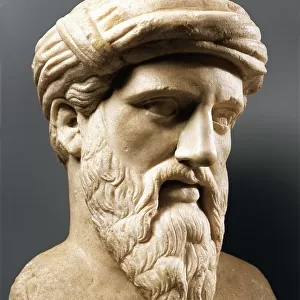Home > Universal Images Group (UIG) > Art > Archeology
Statue of King Gudea (circa 2140- 2124 B. C. ) ruler of Lagash, known as the Little Gudea, from Telloh, diorite
![]()

Wall Art and Photo Gifts from Universal Images Group (UIG)
Statue of King Gudea (circa 2140- 2124 B. C. ) ruler of Lagash, known as the Little Gudea, from Telloh, diorite
Statue of King Gudea (circa 2140- 2124 B.C.) ruler of Lagash, known as the Little Gudea, from Telloh, diorite 22nd Century B.C. France, Paris, Musee du Louvre, Sumerian art
Universal Images Group (UIG) manages distribution for many leading specialist agencies worldwide
Media ID 9516481
Archeological Artifact Barefoot Cuneiform Hands Clasped Headdress King Mesopotamian Text Traditional Clothing 22nd Century Bc Gudea
EDITORS COMMENTS
This print showcases the awe-inspiring Statue of King Gudea, a prominent ruler of Lagash during the 22nd century B. C. Known as the Little Gudea, this diorite sculpture is an extraordinary example of Sumerian art and can be found in the Musee du Louvre in Paris, France. In this full-length depiction, King Gudea sits majestically with his hands clasped together in a gesture of power and authority. The intricate carving on his traditional clothing and headdress reflects the skilled craftsmanship of ancient civilizations. With no people present in the frame, we are left to marvel at this remarkable archeological artifact that has survived for thousands of years. The vertical composition emphasizes the grandeur and significance of King Gudea's presence. His barefoot stance symbolizes humility despite his royal status. The inclusion of text written in cuneiform adds another layer to our understanding of Mesopotamian culture and history. This single object captures a male likeness that represents not only King Gudea himself but also serves as a testament to human representation throughout time. As we gaze upon this studio shot, we cannot help but feel transported back to an era long gone yet preserved through such masterpieces
MADE IN THE USA
Safe Shipping with 30 Day Money Back Guarantee
FREE PERSONALISATION*
We are proud to offer a range of customisation features including Personalised Captions, Color Filters and Picture Zoom Tools
SECURE PAYMENTS
We happily accept a wide range of payment options so you can pay for the things you need in the way that is most convenient for you
* Options may vary by product and licensing agreement. Zoomed Pictures can be adjusted in the Cart.





